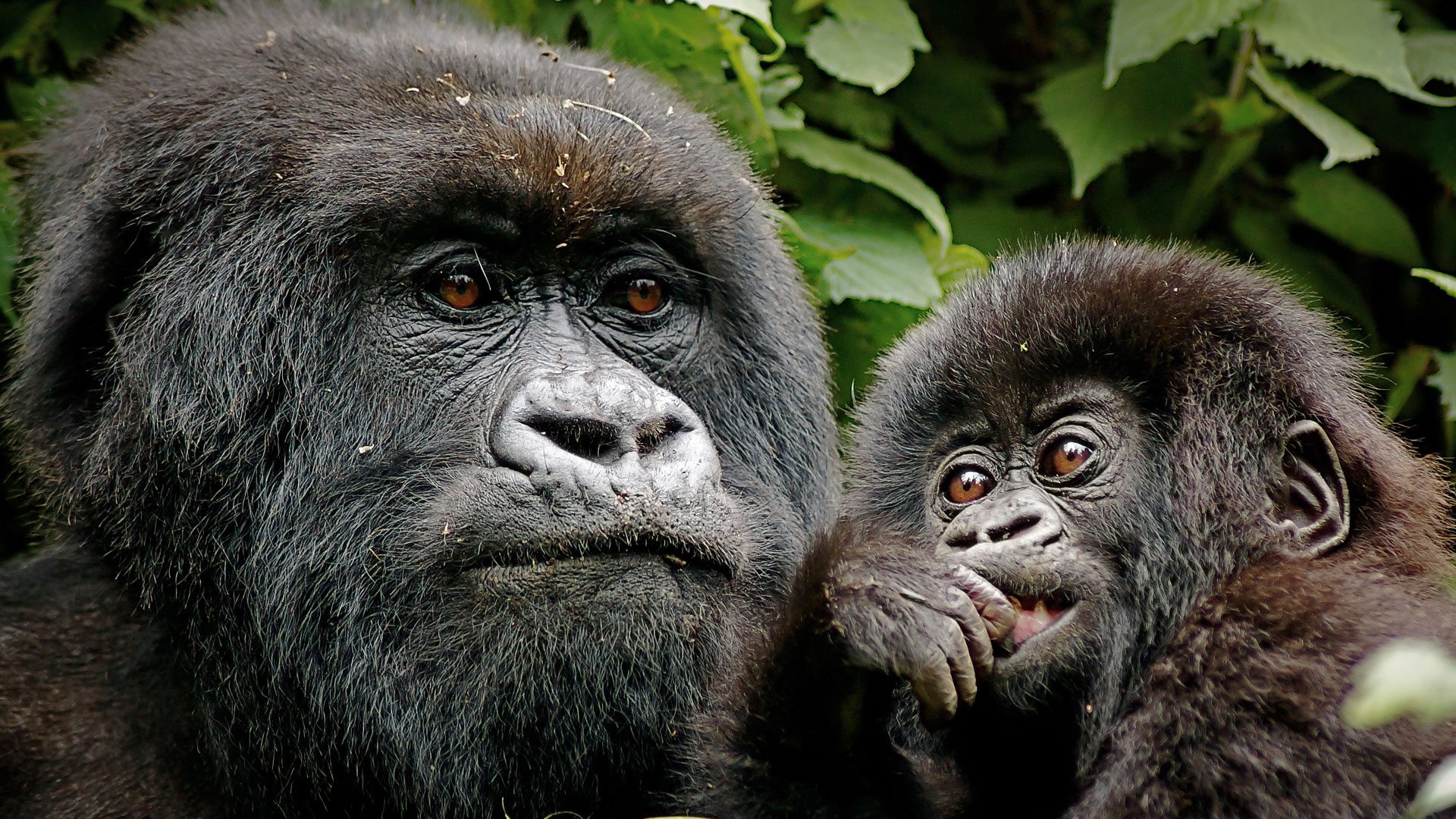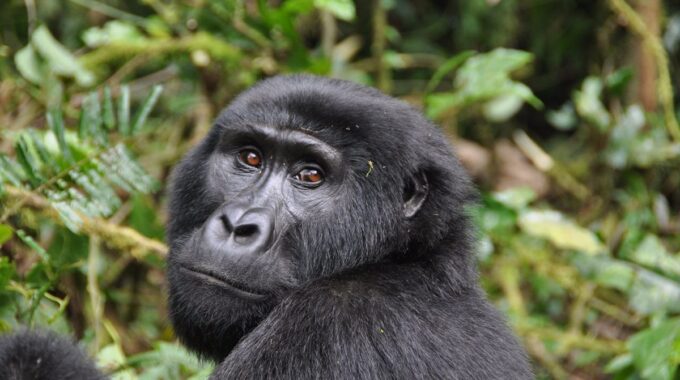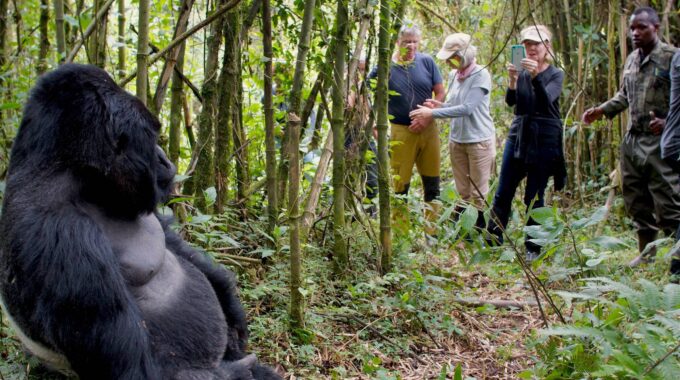Volcanoes national park, Bwindi gorilla park, and Mgahinga Gorilla National Park—Community Involvement in Park Conservation…
Understanding the Park’s Ecosystem
Understanding the Park’s Ecosystem: Volcanoes, Bwindi & Mgahinga
Understanding-the-parks-ecosystem: Gorilla trekking in East Africa offers more than just a thrilling encounter with endangered mountain gorillas—it provides a front-row seat to some of the most remarkable ecosystems on the planet. Whether you’re exploring the misty slopes of Volcanoes National Park in Rwanda, the ancient biodiversity of Bwindi Impenetrable Forest, or the volcanic highlands of Mgahinga Gorilla National Park in Uganda, each destination hosts a uniquely vibrant web of life.
In this guide, we’ll dive deep into the ecosystems of these three protected areas, exploring their climate, flora, fauna, and conservation significance—so you can better appreciate the extraordinary natural world surrounding your gorilla trekking adventure.
Volcanoes National Park Ecosystem (Rwanda)
Geography and Climate
Volcanoes National Park sits in the northwest of Rwanda and forms part of the wider Virunga Conservation Area. The park is home to five of the eight Virunga volcanoes: Karisimbi, Bisoke, Muhabura, Gahinga, and Sabyinyo. With altitudes ranging from 2,400 to over 4,500 meters, the park’s terrain includes bamboo forests, hagenia woodlands, and afro-alpine zones. Its high elevation makes the climate cool and misty, with substantial rainfall throughout the year, especially from March to May and October to November.
Flora
The vegetation in Volcanoes National Park is highly stratified by altitude. Lower slopes feature dense bamboo forests, which are crucial for mountain gorilla diets. At mid-levels, hagenia-hypericum forests dominate—colorful, moss-draped woodlands that provide food and shelter to many species. At the highest elevations, alpine meadows and giant lobelias thrive in the colder, wind-swept environment.
Fauna
In addition to the iconic mountain gorillas, the park supports populations of golden monkeys, forest elephants, bushbucks, buffalo, and over 180 bird species—including the Rwenzori turaco and the handsome francolin. It is one of the most biologically rich areas in East Africa, with many endemic species found only in the Albertine Rift region.
Conservation Significance
Volcanoes National Park is a flagship example of successful conservation. Thanks to intensive protection efforts, the population of mountain gorillas in Rwanda has steadily increased, contributing to their reclassification from “Critically Endangered” to “Endangered” on the IUCN Red List. Community-based tourism initiatives have also improved livelihoods in nearby villages, linking ecological health to human well-being.
Related Blog: Gorilla Trekking in Rwanda: What to Expect in Volcanoes National Park
Bwindi Impenetrable Forest Ecosystem (Uganda)
Geography and Climate
Bwindi Impenetrable National Park lies in southwestern Uganda, straddling the edge of the Albertine Rift at elevations ranging from 1,160 to 2,607 meters. The park is covered in one of Africa’s oldest and most biologically diverse rainforests, dating back over 25,000 years. The tropical climate is humid year-round, with the heaviest rains occurring in March-May and September-November.
Flora
Bwindi’s thick, tangled vegetation includes over 1,000 plant species, with extensive swathes of ferns, vines, and towering trees. These forests support a rich vertical stratification of life, from undergrowth-dwelling amphibians to canopy-dwelling primates and birds. Mahogany, ebony, and fig trees dominate the upper levels, while medicinal plants and endemic flowers thrive below.
Fauna
Bwindi is renowned for its biodiversity, particularly as home to roughly half the world’s remaining mountain gorillas. It also shelters over 120 mammal species, including chimpanzees, colobus monkeys, duikers, and forest elephants. Bird enthusiasts flock here for its 350+ bird species, many of which are Albertine Rift endemics like the African green broadbill and Shelley’s crimsonwing.
Conservation Significance
Bwindi is a UNESCO World Heritage Site and one of the most ecologically significant parks in Africa. Its biodiversity conservation strategy incorporates eco-tourism, research, and community involvement. Conservation groups have helped fund schools, clinics, and infrastructure in surrounding villages to ensure that locals benefit from tourism revenues.
Related Blog: Bwindi Gorilla Trekking: A Journey Through the Impenetrable Forest
Mgahinga Gorilla National Park Ecosystem (Uganda)
Geography and Climate
Mgahinga Gorilla National Park is Uganda’s smallest national park, covering just 33.7 square kilometers, yet it is a crucial component of the Virunga ecosystem shared with Volcanoes (Rwanda) and Virunga National Park (DRC). Mgahinga encompasses three extinct volcanoes—Muhabura, Gahinga, and Sabyinyo—and features dramatic altitudinal gradients from 2,227 to 4,127 meters. The climate is cool and often misty, with rains in April–May and October–November.
Flora
The vegetation zones in Mgahinga mirror those in Volcanoes National Park, transitioning from bamboo to montane forests and finally to Afro-alpine meadows. This gradient supports a wide range of ecological niches within a small area. The dense bamboo stands in particular serve as a favorite food source for both gorillas and golden monkeys.
Fauna
Though lesser known than Bwindi, Mgahinga is home to a habituated gorilla family, the Nyakagezi group, and is one of the few places in the world where you can see both mountain gorillas and golden monkeys in a single trek. Other mammals include bush pigs, giant forest hogs, and numerous bat and rodent species. The park also boasts more than 180 bird species.
Conservation Significance
Mgahinga plays a vital role in transboundary conservation, contributing to the protection of the larger Virunga ecosystem. Collaborative efforts between Uganda, Rwanda, and the DRC help safeguard wildlife corridors and migration routes. The park also promotes sustainable tourism and works with local Batwa communities to preserve indigenous cultural knowledge.
Related Blog: Why Visit Mgahinga? Uganda’s Hidden Gem for Gorilla Trekking
Comparing the Three Ecosystems
| Park | Size | Elevation | Key Species | Unique Features |
|---|---|---|---|---|
| Volcanoes (Rwanda) | 160 km² | 2,400–4,500m | Mountain gorillas, golden monkeys | Virunga volcanoes, Afro-alpine flora |
| Bwindi (Uganda) | 321 km² | 1,160–2,607m | Mountain gorillas, chimpanzees, rare birds | Ancient rainforest, UNESCO site |
| Mgahinga (Uganda) | 33.7 km² | 2,227–4,127m | Mountain gorillas, golden monkeys | Volcano hiking, cultural tourism |
Why the Ecosystem Matters for Gorilla Trekking
Understanding the park’s ecosystem enhances your gorilla trekking experience by giving you a deeper appreciation of the complex web of life that supports these magnificent creatures. From the plants they eat to the birds that call through the forest, every element is connected. Trekking with knowledgeable guides not only ensures your safety but also offers insights into the ecological dynamics at play.
Related Blog: Physical Fitness for Gorilla Trekking: Are You Ready?
How You Can Support These Ecosystems
- Choose eco-friendly operators like Gorilla Rwanda Safaris who prioritize conservation and community support.
- Follow gorilla trekking guidelines to minimize disturbance to wildlife.
- Donate to conservation organizations working in the region (#).
- Support local crafts and services that empower nearby communities.
Conclusion
The ecosystems of Volcanoes, Bwindi, and Mgahinga are among the most biodiverse and ecologically significant in the world. Each park offers a distinct experience, from bamboo-covered volcanoes to ancient rainforest jungles. When you visit, you’re not just seeing gorillas—you’re stepping into a thriving, dynamic world that has evolved over millennia.
By understanding and respecting these ecosystems, you contribute to the long-term survival of endangered species and the communities that coexist with them. Your trek becomes more than a bucket-list item—it becomes a step toward a more sustainable future.
Related Blog: Best Time to Visit Rwanda or Uganda for Gorilla Trekking




